Scientists have identified a new species of tyrannosaur from fossils found in western New Mexico. The dinosaur has been named Tyrannosaurus mcraeensis. Although it lived many millions of years before T. rex, it was closely related to it and around the same size.
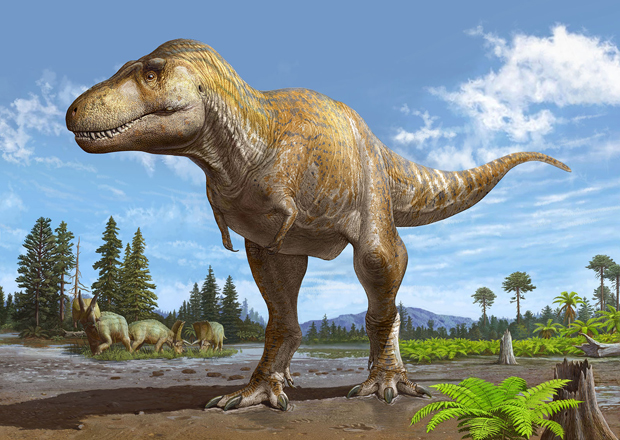
Tyrannosaurus mcraeensis
The study, published in “Scientific Reports” postulates that the ancestors of T. rex originated in southern Laramidia. Where and when the tyrannosaur lineage that includes T. rex and its closest relatives evolved remains unclear. It had been thought that these theropods originated in Asia, or perhaps at more northerly latitudes of Laramidia. The identification of fossils representing a giant, 12-metre-plus tyrannosaur suggests that large-bodied, apex predators evolved alongside other exceptionally large dinosaurs at lower latitudes.
The researchers examined a partial skull (NMMNH P-3698), that had been excavated from a location in Sierra County, New Mexico. The fossil material consisted of a right postorbital and squamosal, along with a left palatine, a fragmentary maxilla and elements from the lower jaws including the left dentary. The fossils come from Hall Lake Formation (McRae Group). Uranium to lead (U/Pb) isotope analysis of a layer some thirty metres below the tyrannosaur fossil site is dated to 73.2 mya plus or minus 0.7 million years. This indicates that Tyrannosaurus mcraeensis predates T. rex by approximately 6-7 million years.
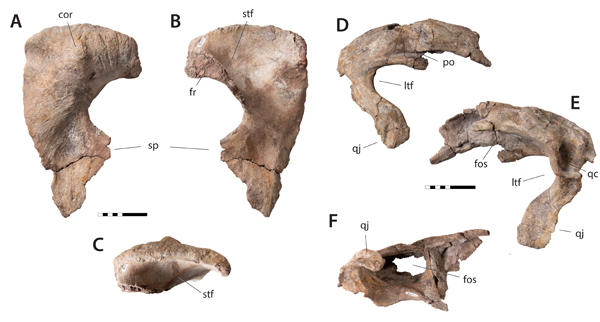
The skull bones, previously assigned to T. rex are currently on display at the New Mexico Museum of Natural History & Science (NMMNHS).
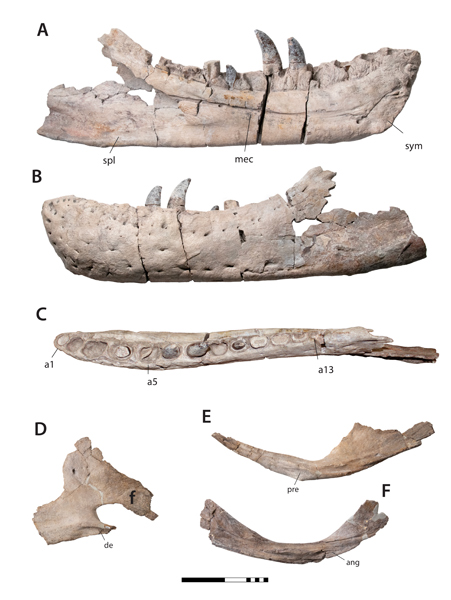
Older and More Primitive than Tyrannosaurus rex
While the new discovery predates T. rex, the paper notes that subtle differences in the jaw bones make it unlikely that T. mcraeensis was a direct ancestor. However, it is assigned to the Tyrannosaurini tribe, which is defined by the authors as the last common ancestor of the Asian Tarbosaurus bataar and Tyrannosaurus rex and all its descendants.
Contributing authors on the study include researchers from the University of Bath (UK), NMMNHS, University of Utah, The George Washington University, Harrisburg University, Penn State Lehigh Valley, and the University of Alberta.
Ironically, it was the examination of horned dinosaur fossils from the same palaeoenvironment that led to the discovery of a new Tyrannosaurus species. In 2013, then-student Sebastian Dalman began to re-examine ceratopsian fossils, it led to a broader rethink about the dinosaur fauna associated with the McRae Group.
Dalman commented:
“I started working on this project in 2013 with co-author Steve Jasinski and soon we started to suspect we were on to something new.”
Careful Comparison with T. rex Skull Fossils
Analysis of the skull material revealed subtle, but unique traits relating to their morphology and articulation. Careful comparison with T. rex skull fossils led the research team to conclude that these bones did not represent Tyrannosaurus rex. This was something new.
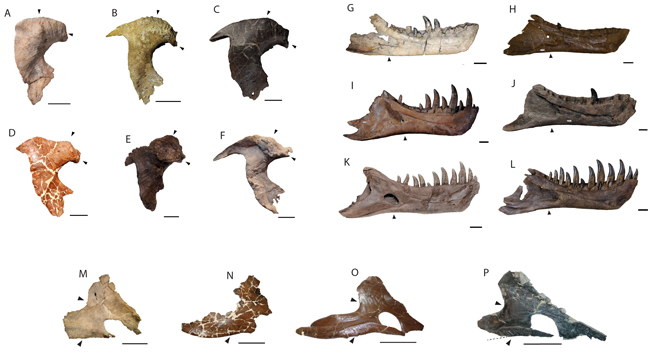
As T. rex is known from multiple individuals, it is possible to show that T. mcraeensis lies outside of the range of individual variation seen in T. rex.
Co-author of the paper, Dr Anthony Fiorillo, Executive Director of NMMNHS explained:
“New Mexicans have always known our state is special, now we know that New Mexico has been a special place for tens of millions of years. This study delivers on the mission of this museum through the science-based investigation of the history of life on our planet.”
Size estimates for Tyrannosaurus mcraeensis put it in the same bracket as the famous and geologically younger T. rex. It is thought to have measured around twelve metres in length.
Fellow author of the paper, Dr Nick Longrich (Milner Centre for Evolution at the University of Bath) added:
“The differences are subtle, but that’s typically the case in closely related species. Evolution slowly causes mutations to build up over millions of years, causing species to look subtly different over time.”
Tyrannosaurus mcraeensis and the Origins of T. rex
The identification of a new Tyrannosaurus from New Mexico raises the intriguing possibility that there are several more new tyrannosaur discoveries yet to be made.
Co-author Dr Spencer Lucas (Palaeontology Curator at the NMMNHS) stated:
“Once again, the extent and scientific importance of New Mexico’s dinosaur fossils becomes clear. Many new dinosaurs remain to be discovered in the state, both in the rocks and in museum drawers!”
Tyrannosaurus mcraeensis expands our understanding of tyrannosaurs in several ways. Firstly, it suggests that the apex predators lived in what is now the southern United States at least 72 million years ago. Secondly, the Tyrannosaurus genus likely originated in southern North America then later expanded into much of the western portion of the continent.
Phylogenetic analysis supports this hypothesis. The analysis places T. mcraeensis as sister taxon to T. rex and suggests the Tyrannosaurini tribe originated in southern Laramidia.
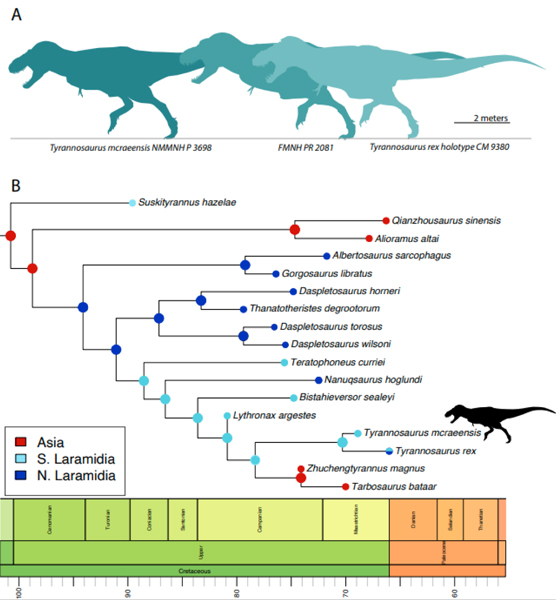
Tyrannosaurus mcraeensis Raises More Questions
The skull fossils assigned to T. mcraeensis suggest that larger, more robust and powerful tyrannosaurs evolved in the southern United States compared to the smaller and more primitive tyrannosaurs found further north.
For reasons as yet unknown, dinosaurs may have evolved to larger sizes in lower latitudes in North America. This body condition pattern is not seen in modern mammals. This newly described tyrannosaur was part of an ecosystem dominated by super-sized dinosaurs. For example, the giant chasmosaur Sierraceratops turneri was contemporaneous. In addition, the titanosaur Alamosaurus and an as yet, undescribed giant hadrosaur shared this palaeoenvironment.
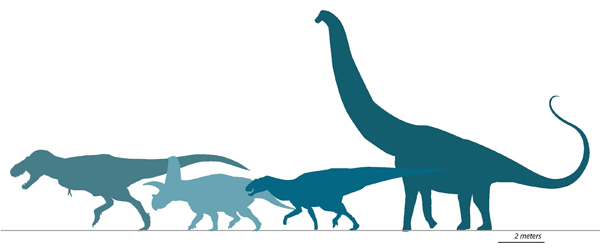
Giant tyrannosaurs were able to spread north during the Maastrichtian stage of the Late Cretaceous. The reasons for this migration remain unclear. Perhaps the northward spread of giant herbivores such as Triceratops and Torosaurus created a food source that could be exploited by the very biggest tyrannosaurs.
Everything Dinosaur acknowledges the assistance of a media release from the University of Bath in the compilation of this article.
The scientific paper: “A giant tyrannosaur from the Campanian–Maastrichtian of southern North America and the evolution of tyrannosaurid gigantism” by Sebastian G. Dalman, Mark A. Loewen, R. Alexander Pyron, Steven E. Jasinski, D. Edward Malinzak, Spencer G. Lucas, Anthony R. Fiorillo,
Philip J. Currie and Nicholas R. Longrich published in Scientific Reports.
The Everything Dinosaur website: Everything Dinosaur.






So fascinating. They just keep appearing !! A must read paper. Thankyou.